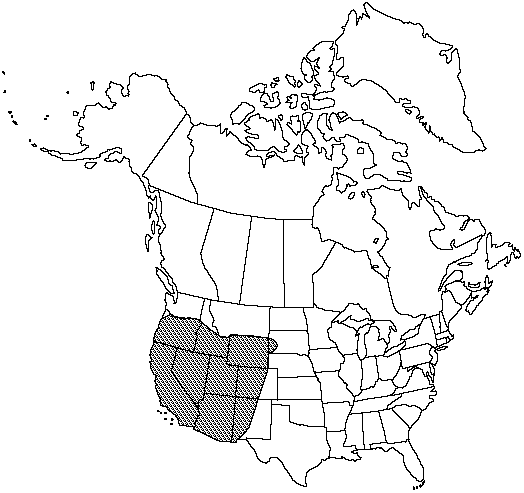Athyrium filix-femina var. californicum
Rhodora 19: 201. 1918.
Petiole 13–60 cm; scales brown or black, lanceolate or ovatelanceolate, 7–15 × 1–4 mm. Blade narrowly elliptic to oblanceolate, 1–2-pinnate-pinnatifid, 25–130 × 8–25 cm, gradually narrowed proximally, broadest at or just above middle, apex acuminate. Pinnae sessile or very short-stalked, linear-oblong, apex acuminate. Pinnules linear-oblong or linear-lanceolate, base basiscopically cuneate, acroscopically truncate, ± auriculate, apex ± acute to acuminate. Rachis, costae, and costules with scales and usually with pale glands. Sori elliptic or oblong, straight, hooked at distal end, or horseshoe-shaped, medial; indusia dentate or ciliate with nonglandular marginal hairs as long as width of indusia. Spores brown.
Habitat: Moist woods, meadows, streambanks
Elevation: 1000–3500 m
Distribution

Ariz., Calif., Colo., Idaho, Nev., N.Mex., Oreg., S.Dak., Utah, Wyo.
Discussion
This southwestern variety, Athyrium filix-femina var. californicum, occurs at higher elevations than var. cyclosorum. Athyrium filix-femina var. californicum and var. cyclosorum are more closely related to each other than to eastern varieties. Distinctness between western varieties was shown by F. K. Butters (1917); F. S. Liew (1972) treated them as consubspecific.
Selected References
None.